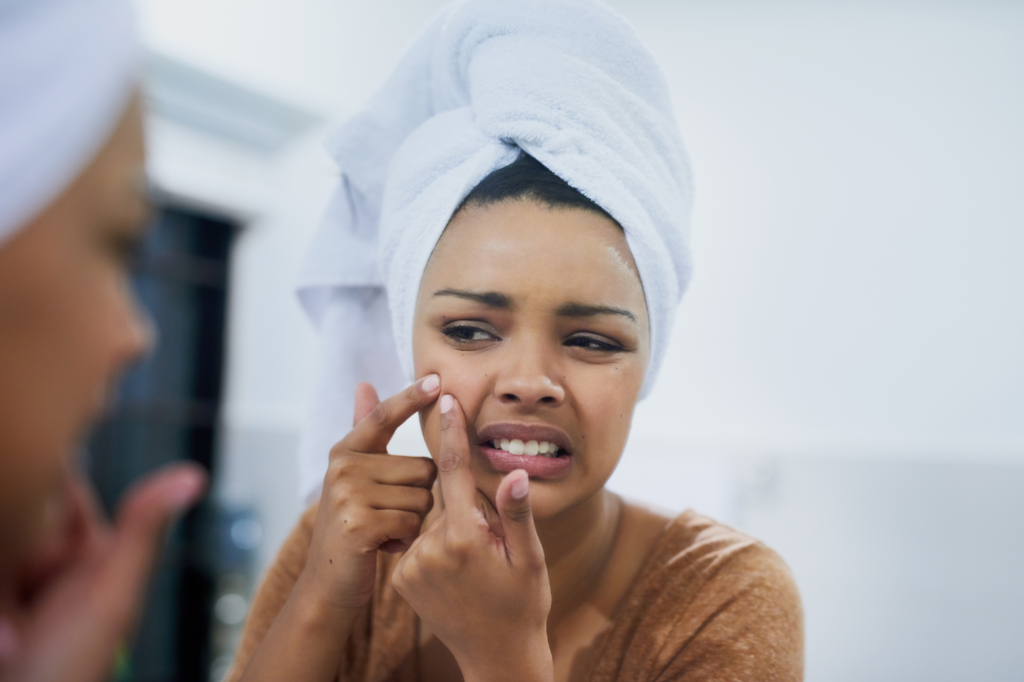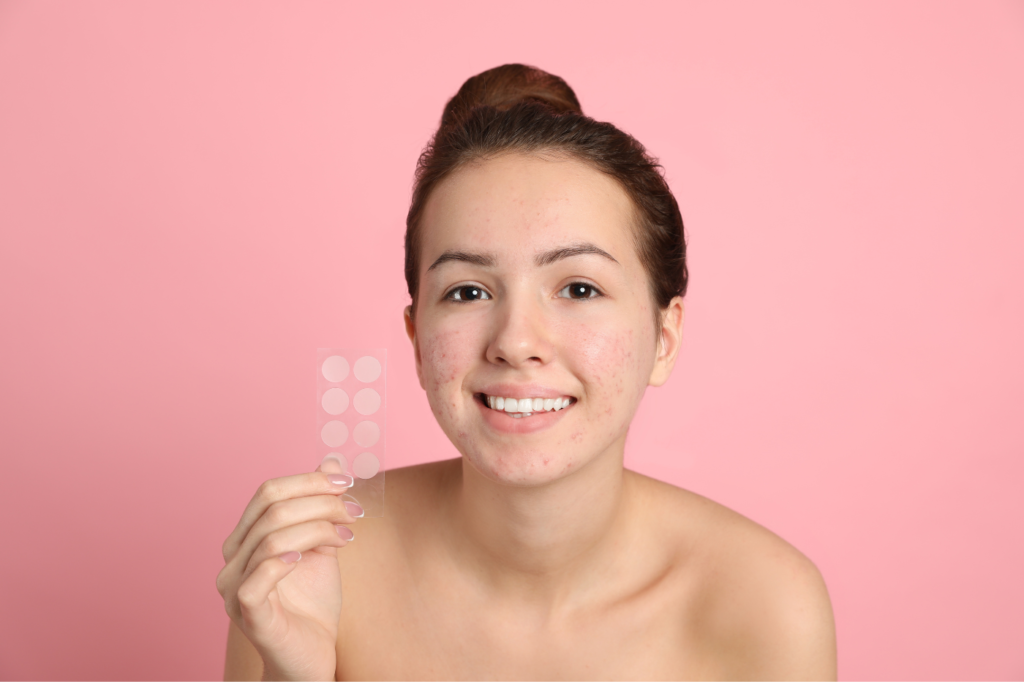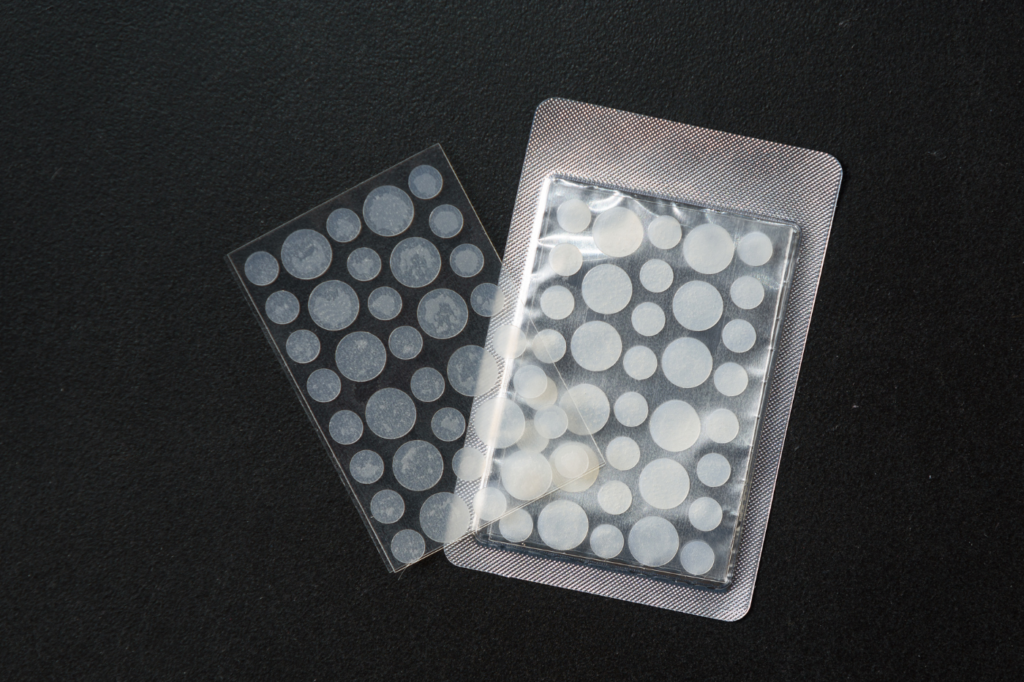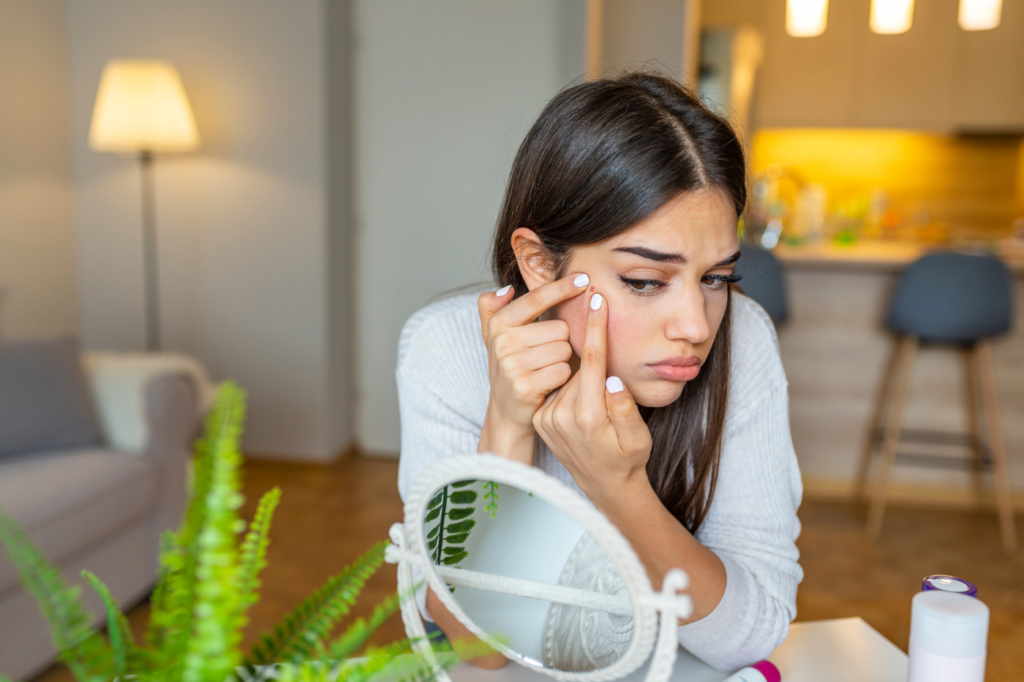A dermatologist weighs in on the effectiveness of hydrocolloid patches.
Pimple patches, zit stickers, or hydrocolloid patches – what are they, how do they work, and are they worth it?
I’ve heard all of the questions!
But despite the popularity of pimple patches, most of my patients don’t know how or why they work. I’ve also had some patients try the wrong kind of pimple patches for their acne and not see any results. So let’s answer all your burning questions about what these over-the-counter spot treatments can and can’t do for your acne. I’ve also included a few of the pimple patches I recommend.
How do pimple patches work?
Pimple patches are made of hydrocolloid, a moisture-absorbing dressing commonly used in wound healing. Hydrocolloid provides skin with a moist environment so it can heal from the inside out. So, you can think of these patches as a small dressing for your zit (yes, a zit is considered a wound).
Suppose you’ve committed the cardinal sin of dermatology and picked and popped a pimple. In that case, a hydrocolloid patch will help absorb excess fluids, like pus and oil, while protecting the wound from bacteria. Leaving you with a flatter, less inflamed pimple when you take it off.
What ingredients should you look for in pimple patches?
Pimple patches that only contain hydrocolloid will work best for most breakouts. Patches that contain salicylic acid, glycolic acid, or tea tree oil may work well for the juicier (i.e., deep and inflamed) pimples or if you have oily skin; however, they may cause irritation. Some patches contain aloe or niacinamide, which can be soothing but do not necessarily help treat the pimple itself.
Large, painful pimples trapped under the skin will likely require additional treatments that these patches just can’t deliver.
How to use pimple patches
Pimple patches should be applied to clean skin after a thorough cleanse but before applying the rest of your skin-care regime. Most patches need to be worn for a few hours to overnight to be effective.
So, apply the pimple patch over your zit and leave it on for the recommended time. Then, peel it off to reveal a smaller, less inflamed pimple. Trust me; the results can be pretty satisfying!
Can pimple patches make acne worse?
If anything, these patches won’t make your acne worse, but they may not make it better. Some people do not see any results at all with pimple patches. If you have sensitive skin, you may want to avoid the patches. The adhesive and ingredients used to dry out pimples can irritate sensitive skin.
Why do pimple patches turn white?
Why do pimple patches turn white…might be one of my favorite questions about these patches! The white substance you see when you remove the patch isn’t the pus from the zit. Pimple patches turn white as they absorb the moisture from your skin.
So, no, pimple patches do not suck the gunk out of your pore. Instead, they gently absorb any seeping liquids from the skin turning the patch white and gummy on the inside.
Do pimple patches work on cystic acne?
Pimple patches work on surface-level, pus-filled acne. Because cystic acne causes painful, pus-filled pimples deep under the skin, these patches will likely not be effective.
What pimple patch is best?
Deciding which pimple patch is best for you depends on what type of zit you have and your skin type. A hydrocolloid patch will likely work best for standard, freshly popped zit. In contrast, a patch with spot-treating ingredients like salicylic or glycolic acid may work better for a more stubborn pimple.

Either way, pimple patches will help you keep your fingers off your face and give your zit a chance to heal on its own.
These products are not sponsored and may not be beneficial for everyone. Consider discussing pimple patches with your dermatologist before you begin using them.
Hero Cosmetics Mighty Patch
Mighty Patches are a non-medicated, hydrocolloid patch with results after six to eight hours of use. The original Mighty Patch provides excellent coverage to absorb oils and pus if the patch size doesn’t matter to you. The Mighty Patch Invisible+ has a matte finish and can be worn under make-up.
Peace Out Acne Healing Dots
Peace Out Acne Healing Dots contain hydrocolloid and salicylic acid to help penetrate and dry out the blemish. In addition, the Peace Out Acne Healing Dots contains aloe vera, which can help soothe an inflamed pimple while minimizing redness.
Cosrx Master Patch
The Cosrx Master Patches are among the most popular hydrocolloid patches and are available in various sizes and shapes. In addition, they also offer a larger, more intensive patch that contains tea tree oil.
ZitSticka Killer Kit
The ZitSticka Killer Kit pimple patch includes dissolving microneedles filled with hyaluronic acid, salicylic acid, and niacinamide to help penetrate deep into blemishes. While this patch combines several common acne-fighting ingredients, the microneedles can irritate sensitive skin.
What to try instead of pimple patches
Since pimple patches are dressed-up wound healing patches, there isn’t any harm in trying them. But, you may not always get the results you desire.
Many great options help you address your acne instead of pimple patches. Consider some of these alternatives instead:
- Manuka Honey: Manuka honey’s antibacterial properties make it an excellent option for wound healing on the skin. Try a manuka honey face mask or honey tapping to help draw out sebum and debris from clogged pores.
- Clay Masks: Try a bentonite clay mask to whisk away potential clogging agents and toxins, leaving you with tighter, cleaner skin.
- Salicylic Acid: This acid is available in both cleansers and topical applications to help exfoliate and clean your skin and decrease acne-related inflammation.
- Differin Gel: Differin gel is an over-the-counter topical medication used to decrease the severity of acne while also helping to accelerate healing.
- Tretinoin: Tretinoin is a prescription-based acne treatment that helps treat breakouts, decreases the appearance of acne scarring, and encourages cell turnover to even out skin tone.
So what’s the bottom line? Pimple patches are a relatively harmless option to help address minor acne issues. They aren’t a cure-all for all your skin concerns but offer a relatively low risk for trying.
Heal Your Skin from the Inside and Out
When your skin breaks out with pimples, it may be your body’s way of calling out for help – raising its red flag from the inside out. So, if you’re ready to dig deeper to reveal what may be holding you back from achieving the healthy, glowing skin you desire, join me on a skin healing journey different from anything you’ve done before.
Discover how you can get clear skin using my SkinClock Method.
Limited spots are available for upcoming sessions.
Join my waitlist today and discover how to STOP your unpredictable pimple breakouts…so you can finally have clear skin!




